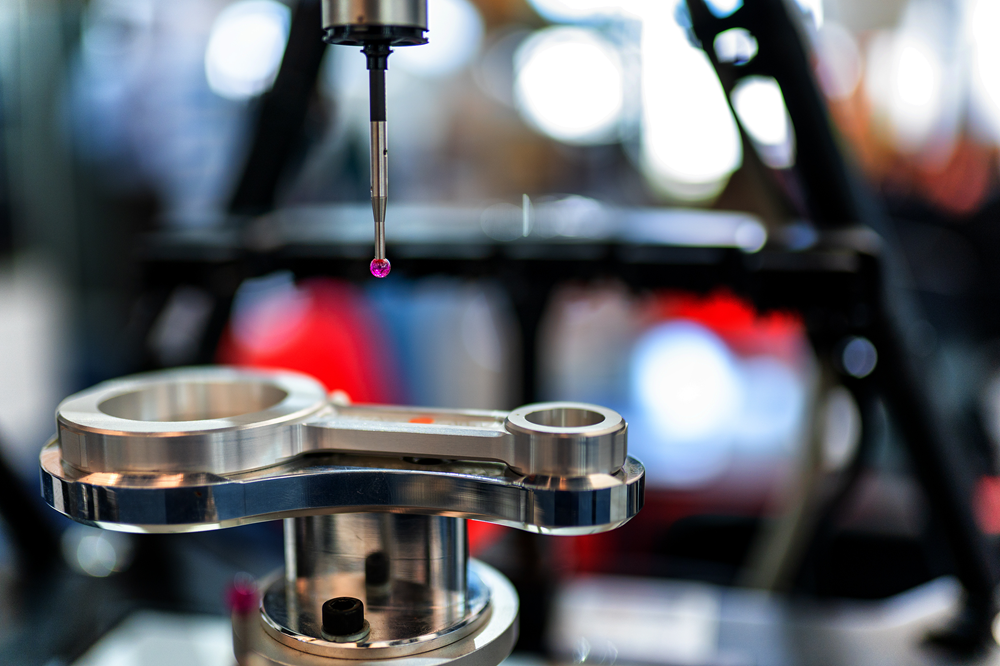Manufacturing high-quality parts within specific engineering tolerances is critical for manufacturers to meet the needs of their customers. After all, each part is designed to enable a larger machine, piece of equipment, or system to not just function, but also operate safely. In fact, in industries with complex parts like aerospace and automotive, meeting stringent engineering tolerances is often the most important aspect of part quality.
Metalworking fluid plays as much of a pivotal role in meeting engineering tolerance requirements as the right machinery and cutting tools do. As a result, optimizing your choice in cutting fluid is critical if you want to minimize rework and scrap rates for parts that are out of spec. So what does it take to find the right cutting fluid for the job?
The Most Important Engineering Tolerances in Metalworking
When manufacturers are producing specific parts, each item has a wide array of specifications to meet, but almost all typically fall within these two categories:
Dimensional Accuracy
Dimensional accuracy measures how closely a manufactured part matches its intended dimensions as specified in product requirements, including:
- Geometric accuracy, which ensures the correct form, profile, orientation, and location of features within specified tolerances.
- Material thickness, which dictates the uniformity and precision of depth across a part.
- Runout, Which is the variation in motion or position of a surface as a rotating part turns about an axis
- Clearance, which defines the acceptable gaps or overlaps between mating parts or features.
Dimensional accuracy is crucial for ensuring that parts properly fit, function, and perform as needed and intended.
Surface Finish
Surface finish is simply the texture or roughness of a machined part, typically measured in terms of surface roughness average (Ra). The importance of this engineering tolerance depends a lot on parameters like aesthetics (such as decorative automotive parts that need to look polished), or friction reduction and sealability (such as medical devices).
Though engineering tolerances are critical to ensuring overall part quality, engineers need to avoid making requirements unnecessarily extreme. John Treese, Director of Global Training at Master Fluid Solutions, warns, “If engineers forget about the challenges of the manufacturing process, they run the risk of specifying tolerances much tighter than what they actually need. This can make machine programming extremely difficult, and raises the costs of tooling because you have to use better tools.”
What makes the ideal metalworking fluid for machining tight engineering tolerances?
Metalworking fluid has an enormous impact on a machining operation — including its ability to meet engineering tolerance requirements. As a result, choosing the right fluid is as critical as choosing the right cutting tools. So what fluid characteristics are most important to assess?
1. Lubricity and Cooling Ability
Lubricity reduces friction and heat generation during the machining operation — critical to not only minimizing tool wear and improving surface finish, but also to maintaining dimensional accuracy. High lubrication prevents chip welding on cutting tools, eliminating built-up edge that can destroy surface finish requirements or otherwise hinder cutting accuracy. High heat due to poor lubricity can also cause metal workpieces to change dimensionally and also potentially work harden, further reducing tool life and nullifying expected tolerances.
2. Chip Clearing Efficiency
Effective chip evacuation prevents chip recutting, tool damage, and surface finish issues, all of which can lead to deviations from specified tolerances. Maintaining clear chip flow helps ensure dimensional accuracy, as well as prevent the aforementioned chip weld.
3. Material and Operational Compatibility
Each workpiece material and machining process has unique challenges that demand different types of fluid qualities. Using a cutting fluid that’s designed for a specific type of operation and effectively cooling and lubricating a specific type of metal ensures optimal performance, making it easier to meet surface finish and dimensional accuracy requirements.
4. Foam
Excessive foam can interfere with machining operations, hinder chip evacuation, and affect tool performance, among many other problems that cause parts to run out of spec. “Foam is neither a good cooling agent nor a good lubricator,” warns Treese. “If your system is foaming, you tend to see surface finish changes and even dimensional changes that fall outside of engineering tolerances. Making sure you have a fluid that can handle your operation is very important.”
Finding the Ideal Cutting Fluid
Partnering with a trusted metalworking fluid supplier is critical to ensuring you choose the right cutting fluid. In addition to providing high-quality and innovative coolants, a reputable supplier will be able to optimize selection based on material compatibility, machining processes, and other specific operational needs.
Master Fluid Solutions has several tools to evaluate a customer’s operational requirements and metalworking fluid needs to carefully determine the best coolant for any type of job, down to the impact on meeting engineering tolerance requirements. In fact, optimizing fluid selection with the Master Fluid Solution’s fluid selector tool, the MOTWOF, helped a high-precision parts manufacturer reduce their Ra from 1.6 to just 0.5 with nothing but a coolant change.
Want to ensure you have the right coolant for your needs? Schedule a site visit to learn more.

